First drive: 2018 Jeep Compass in Portugal
In terms of sheer volume, there is no bigger automotive segment than the one comprising compact SUVs. Jeep recognised this more than a decade ago and rolled out the Compass and Patriot to target the horde of (mainly) young buyers snapping up crossovers by the hundreds of thousands. It was a new foray for a brand that had until that point focused on larger, heavy-duty SUVs that embodied Jeep’s conquer-all-terrain roots.
The original Compass eventually gained a ‘Trail Rated’ badge on some models alongside the 2011 facelift. The fact is, very few buyers targeted by the model ever venture beyond the blacktop –- although Jeep execs say even Compass customers like to entertain the notion that they might one day go off the beaten track.

Given that the first-gen Compass was now distinctly long in the tooth, Jeep has just rolled out an all-new successor, this time based on the same Fiat-designed SCCS platform used by the likes of the Renegade and Fiat 500L/500X. However, the Compass is a much bigger offering than these products, sporting a wheelbase that’s 80mm longer than that of the Renegade.
Unlike the cutesy Renegade and shark-nosed Cherokee, the Compass sticks with Jeep’s traditional design ethos, looking for all intents and purposes like a Grand Cherokee that’s shrunk in the wash. That’s by no means a bad thing, as the Compass is an elegant and well-resolved package that’s unlikely to alienate any potential buyers.
Jeep execs say the newbie’s main opposition will come from the similarly sized Kia Sportage, Hyundai Tucson, Ford Escape and Volkswagen Tiguan. The Toyota RAV4 and Honda CR-V are half a size bigger, so they effectively target a different buyer set.

The new Compass is a vital debutant as company suits are tipping it will be the brand’s second-biggest seller after the Cherokee, which accounted for 350,000 of Jeep’s 1.4 million global sales last year. Middle East-spec vehicles will be sourced from Jeep’s Mexico plant, but the international focus of the model can be gauged from the fact it will also be built in Brazil and India (right-hand-drive only).
The second-gen Compass launches here in the fourth quarter of this year, initially only in 4×4 guise, with 4×2 models arriving early next year. There will be four trim levels (Sport, Longitude, Limited and Trailhawk) but all variants get the familiar 184 hp 2.4-litre ‘Tigershark’ engine (with 237 Nm of torque) that we already know well from the Cherokee and Fiat 500X. A nine-speed auto is standard in 4×4 models, while the 4×2 comes with a six-speed auto (there’s also a six-speed manual on offer in other markets).
Our first taste of the Compass took place in Lisbon, Portugal, but we should point out the two vehicles we drove were powered by a 170 hp 2.0-litre diesel engine and 1.4-litre MultiAir turbo respectively, as there were no 2.4 versions available to steer at the international launch. We later drove the GCC-spec 2.4-litre in Dubai and its relatively lacklustre performance is obvious next to similar motors from rivals as well as Jeep’s own European turbo engines.
Nevertheless, we got a good feel for how the Compass fares in terms of ride comfort, dynamics, cabin ambience and even (light duty) off-road ability – not hardcore dune bashing, mud mauling or boulder hopping, mind you.

In terms of off-road credentials, the Compass (especially in Trailhawk form) comfortably eclipses its direct opposition. Although 4×2 models offer a modest 180mm of ground clearance, the 4×4 models sit 20mm higher off the deck, while the Trailhawk ups the ante to 216mm. All-paw models come with Jeep’s Selec-Terrain full-time 4WD system (with Auto, Sand Mud and Snow modes, plus a Rock setting on the Trailhawk model).
There’s also a 3mm thick steel skid plate under the car to protect any of the vital bits from getting bashed during off-road forays. In addition, the Trailhawk gets Hill Descent Control and Jeep Active Drive Low, which gives you a 20:1 crawl ratio.

Our off-road experience in Portugal comprised an excursion across a heavily rutted gravel track, plus a single obstacle designed to showcase the vehicle’s wheel articulation capability (200mm). It wasn’t death-defying stuff, but it was enough the illustrate the Compass Trailhawk serves up more than sufficient all-terrain ability to cater to its target audience.
But the big surprise is how well the Compass fares on the tarmac. We sampled a Trailhawk on 17-inch rims, and a full-fat Limited with 18-inch alloys and all the bells and whistles. Both versions impressed with their well-damped ride and grippy, composed handling -– aided by a torque-vectoring (by brake) system.

The Compass coped far better than expected on all the roads we covered. On the highway it cruises quietly and effortlessly in the 120-140 kph range, and it also proved tactile and enjoyable across twisty roads. The electrically assisted steering has a nice meaty feel to it, and the Jeep serves up more turn-in bite than anticipated, so you can maintain a decent clip through the twisties.
Cabin ambience is also far better than Jeeps of yesteryear, with a clean, uncluttered layout and extensive use of soft-touch materials. The rear seats are adequately spacious, and luggage space is also generous for this segment (770 litres or 1693 litres with the rear seats folded down).

There’s a vast array of kit on offer, including Jeep’s UConnect touch-screen (7-inch or 8.4-inch) infotainment system with Apple CarPlay and Android Auto, a Beats Premium Audio System with a 506-watt digital amplifier and a vast dual-pane panoramic sunroof.
The safety arsenal comprises Forward Collision Warning-Plus, LaneSense Departure Warning-Plus, Blind-spot Monitoring and Rear Cross Path detection, ParkView rear backup camera with dynamic grid lines, Automated Parallel and Perpendicular Park assist, Adaptive Cruise Control, electronic stability control (ESC) with electronic roll mitigation and six standard airbags. Jeep also boasts of the “safety cage” construction with more than 65% high-strength steel.

In addition, there’s a ‘Jeep Skills’ display on screen that monitors the slope beneath your Jeep in real time, shows you the position of your wheels and their slippage, power and torque being deployed, and various other stats.
All in all, our first acquaintance with the Compass leads us to believe it’s a very capable and well-rounded compact SUV, backing up good on-road dynamics with a spacious and well-packaged cabin. It’s a vastly better offering than its predecessor, but we only wish we’d get the perky 1.4-litre MultiAir turbo engine instead of the lacklustre Tigershark motor destined for GCC versions.
Photos by Jeep.
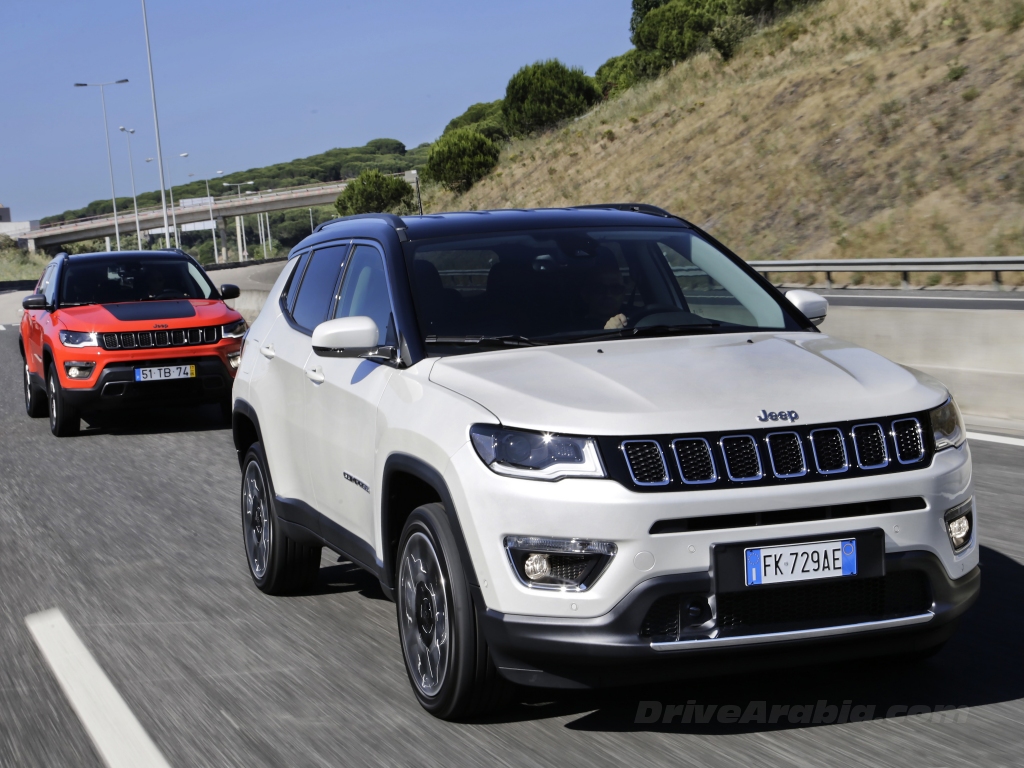

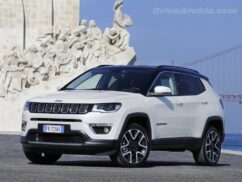







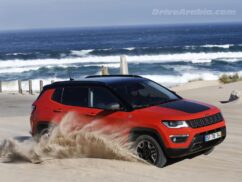
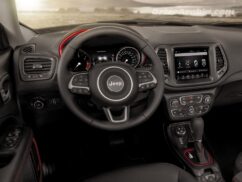



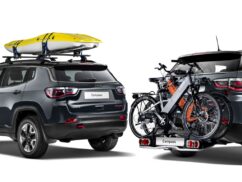
Comments
SilverSpoon
Appreciate your review! Any leads on arrival at local dealerships?
Mashfique Hussain Chowdhury
Most likely by the Dubai Motor Show.
Robert Ramos
It looks good. I like this than Hyundai SUV’s.